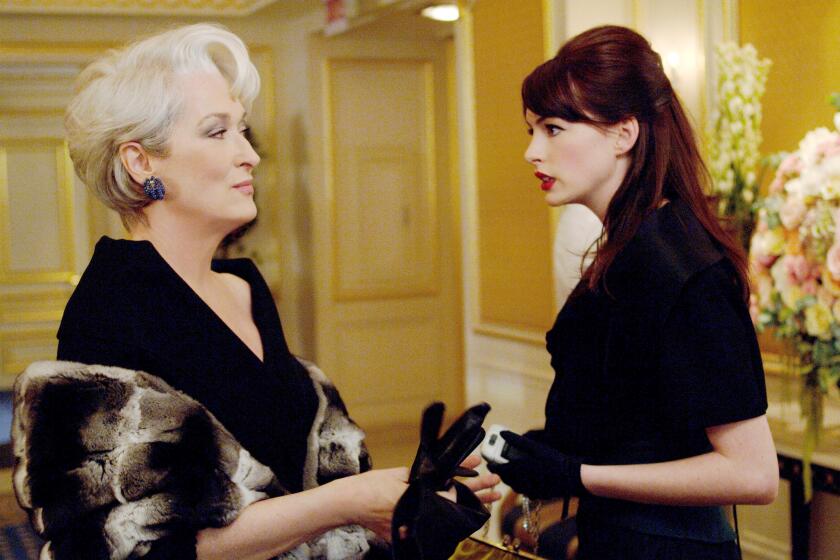MOVIE REVIEW : Ray’s ‘Stranger’: Bare-Bones Filmmaking From a Master
- Share via
“Agantuk”--translated as “The Stranger”--is the great Indian director Satyajit Ray’s final film, and it’s wonderful. Completed in 1992, shortly before Ray’s death, it has been exhibited in this country until now primarily at film festivals. The commercial success of the recent Ray retrospective in L.A. no doubt had something to do with its belated local release. How else to explain the criminal absence from our screens for three long years of the final work--the swan song--of one of the finest of all film artists?
The films Ray directed in his final years--which also include his Ibsen adaptation “Enemy of the People” and “The Branches of the Tree,” both still undistributed here except at festivals and both intermittently remarkable--have a spareness and a directness unlike any of his other films. Plagued with heart problems, Ray in his last years rarely ventured with his cameras outside studio interiors. Reportedly an ambulance and a team of doctors were always on the set of “The Stranger,” and his son Sandip, also a director, assisted.
But if “The Stranger” is bare-bones filmmaking, it’s bare-bones filmmaking by a master. Certain directors--Luis Bun~uel was another, and perhaps Kurosawa--developed a simplicity of technique in old age that seems to distill all of their complicated feelings about life. It’s as if we are seeing through to the essential diagrams of drama; the grids and interstices and byways of existence are mapped and laid bare.
For Ray, this functional, no-frills approach to filmmaking might have arrived even without his frailty--without his physical requirement to film simply and quickly and directly. His best films, after all, were always fables of a sort, where all the participants seem burningly individual and yet charged with a larger, clarifying role. The clarity of “The Stranger” isn’t simplistic; it’s simplifying. It’s shot almost entirely indoors, and structured as a series of dialogues, and yet it gives the impression of wide open spaces. Its vistas are inward.
The film is constructed like a cross between a psychological mystery thriller and a child’s fairy tale. Anila (Mamata Shankar) and her husband, Sudhindra (Deepankar De), a middle-class Calcutta couple with one son, the bright-eyed 11-year-old Satyaki (Bikram Bhattacharya), are visited unexpectedly by a man, Manmohan Mitra (Utpal Dutt), who claims to be the wandering uncle Anila has not seen in 35 years. (Anila has no clear memory of him.) Manmohan says he wants to stay with them for only a few days, and, in the spirit of “traditional Indian hospitality,” Anila and Sudhindra guardedly comply.
Is Manmohan really Anila’s uncle? Ray keeps us off balance for a long time; like Manmohan, he toys with our expectations. But what gives “The Stranger” its resonance is that ultimately the film is about everybody’s true identity. Manmohan, who describes his years living with primitive Indian tribes, or abroad in Brazil, New York or Central America, is the interloper who gently coaxes each character into a passage of deep, self-examining reflection.
He charms Satyaki instantly with tales of magic--the boy loves the idea that this weary, rather formidable adventurer might not be his uncle. To Satyaki, it’s a great game either way. Sudhindra, playing the patriarch, is full of little traps to trip up their house guest; he brings in a few friends to have a go at Manmohan’s credibility.
One of them, a lawyer (Dhritiman Chatterjee), is a rationalist who turns the talk session into a indictment of Manmohan’s spiritual endorsement of the “uncivilized” life. For Manmohan, modern civilization is full of discontents. His whole purported way of life, the way he renounced a promising academic career to strike out on his own wayward way, is a living testament to his belief. And, although there is a blasted weariness to him, he still seems more deeply, mysteriously content than anyone else in the movie.
Maybe that’s why Anila wants so much to believe in him. It’s not just that she perhaps wants to re-imagine herself as the tiny girl she was when she last saw her uncle. She also senses Manmohan has secrets that can revivify her life. And, in one of the most expressive and joyous moments in any Ray movie, we see her join in a tribal dance that brings out the ecstatic in her. It’s always dangerous to call any director’s film a swan song, but Ray must have known this movie would be his last. “The Stranger” wears its finality lightly. It’s a serene valedictory.
* Unrated. Times guidelines: Poverty is highlighted in a few scenes.
(BEGIN TEXT OF INFOBOX / INFOGRAPHIC)
‘The Stranger’ Utpal Dutt: Manmohan Mitra Mamata Shankar: Anila Bose Deepankar De: Sudhindra Bose Bikram Bhattacharya: Satyaki A Filmhaus releasing & C.E.G. Worldwide presentation. Director/screenplay/music Satyajit Ray. Cinematographer Barun Raha. Editor Dulal Dutt. Sound Sujit Sarkar. Running time: 2 hours, 3 minutes.
* At the Monica 4-Plex, 1332 2nd St., Santa Monica; (310) 394-9741.
More to Read
Only good movies
Get the Indie Focus newsletter, Mark Olsen's weekly guide to the world of cinema.
You may occasionally receive promotional content from the Los Angeles Times.










